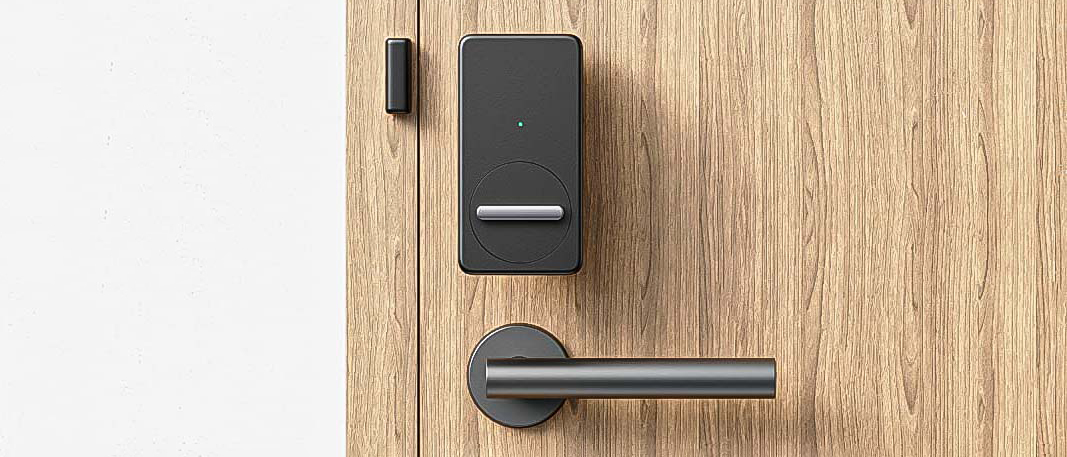Tom's Guide Verdict
The Switchbot Lock is a rental and landlord-friendly device that adds remote control to a lock that you can’t remove, but it is bulky and a bit awkward to install.
Pros
- +
Works with many locks that can’t be replaced
- +
Works with Alexa, Google and Homekit, plus Apple Watch
- +
Can work with multiple locks on one door
Cons
- -
Bulky and awkward looking
- -
Sticky pad that hold lock in place can tear paint off the door
- -
Occasionally jams with some types of lock
Why you can trust Tom's Guide
Size: 4.4 x 2.9 x 2.3 inches
Wireless: Bluetooth 5.0
Works with: Alexa, Google Home, Apple Homekit, SmartThings, IFTTT
ANSI rating: n/a
So you want to install a smart lock? Fabulous! You whip out your screwdriver and start removing the old lock, then your landlord starts yelling about how you aren’t getting your deposit back unless you put that screwdriver away. So much for that plan.
Well, perhaps not: the Switchbot Smart Lock is a smart lock that fits over your existing lock, turning most single cylinder deadbolts into smart locks that can be opened with an app, a code, a keycard, a fingerprint or even your Apple Watch. It is rental-friendly, attached to the door with sticky tape that can be removed when you move out. It certainly isn’t the smallest smart lock that we have seen, though, with a large mechanism that sits rather obviously on the back of your door. Read the rest of our Switchbot Smart Lock review to see if this is the best smart lock for your door.
Switchbot Lock Smart Lock review: Price and availability
The Switchbot Lock is available now, priced at $99.99 for the Switchbot Lock alone, $123 for the lock and keypad, or $152 for the lock and keypad touch with the fingerprint reader.
If you want to control the lock remotely, you’ll also need the Switchbot Hub Mini ($39, sold separately), which links the lock to your home Wi-Fi network.
Switchbot Lock Smart Lock review: Design
There really isn’t a polite way to put this: the Switchbot Lock is a bit of a chunky beast. It’s a big device that sticks onto the back of your door, over the top of the thumb-turn. It is 2.9 inches thick, but it sticks out further as you have to adjust it to fit over the lock: on my door it ended up sticking out 4 inches and looking rather awkward. The device has a smooth-edged, cleanly designed exterior, but it sticks out like, well, a big box that fits on the back of your door. That, unfortunately, is the price you pay if you don’t want to replace the lock mechanism itself.
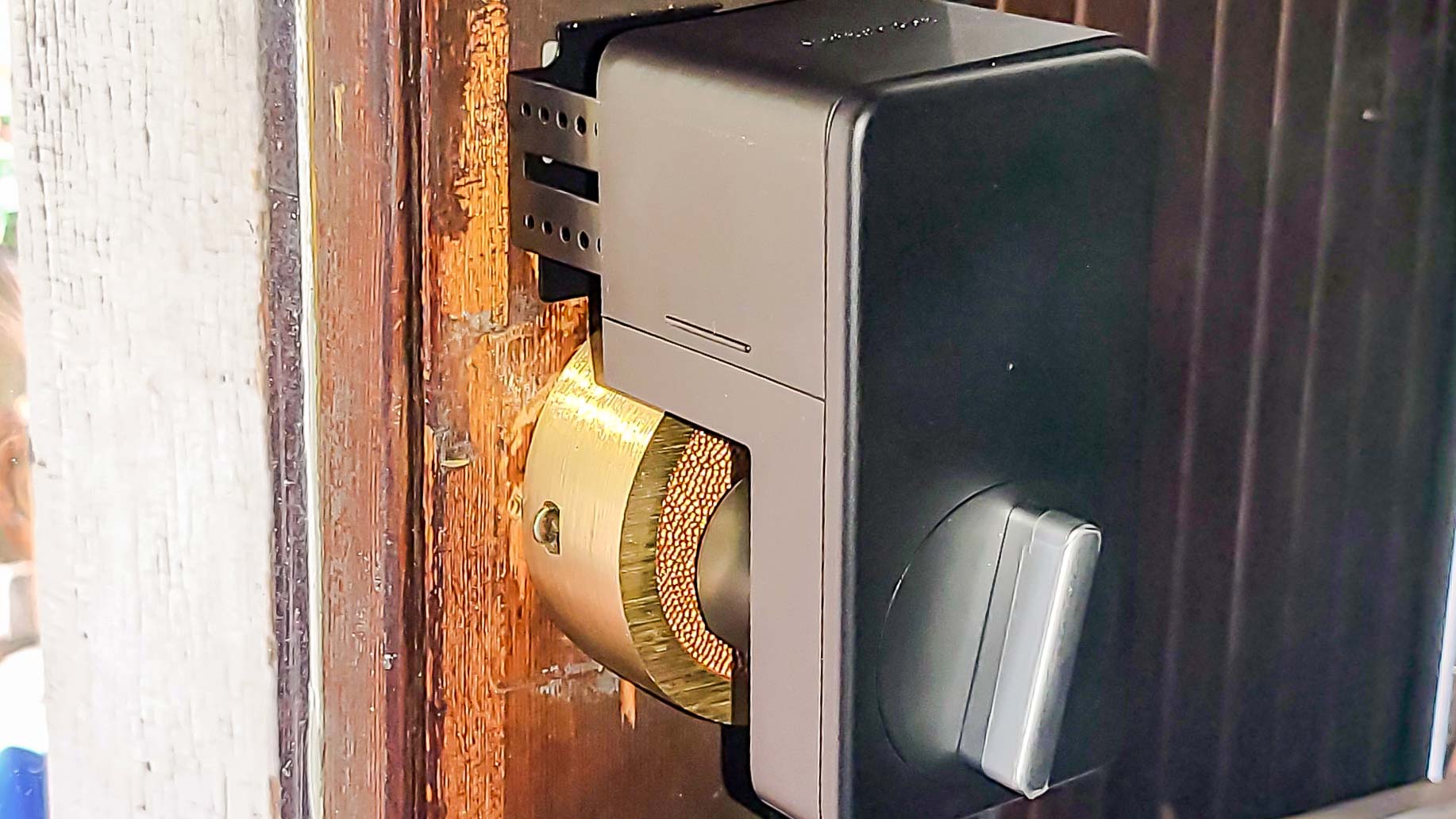
The magic happens with the latching mechanism that fits over the thumb-turn of your existing lock, driven by a motor in the body. This latching mechanism turns an adapter that fits over the installed lock thumb turn. Switchbot has a good guide to which locks it is compatible with, but it should work with most single-cylinder deadbolts and jimmy-proof locks. It cannot work with older style lever, mortise or other unusual types of locks, though.
This mechanism turns the thumb-turn like you do when opening the lock, and should work even with locks that require several turns: you train the device on how to work the lock when you install it. It comes with three different-sized and shaped adapters to fit onto different sizes and shapes of thumb turns on locks.
Get instant access to breaking news, the hottest reviews, great deals and helpful tips.
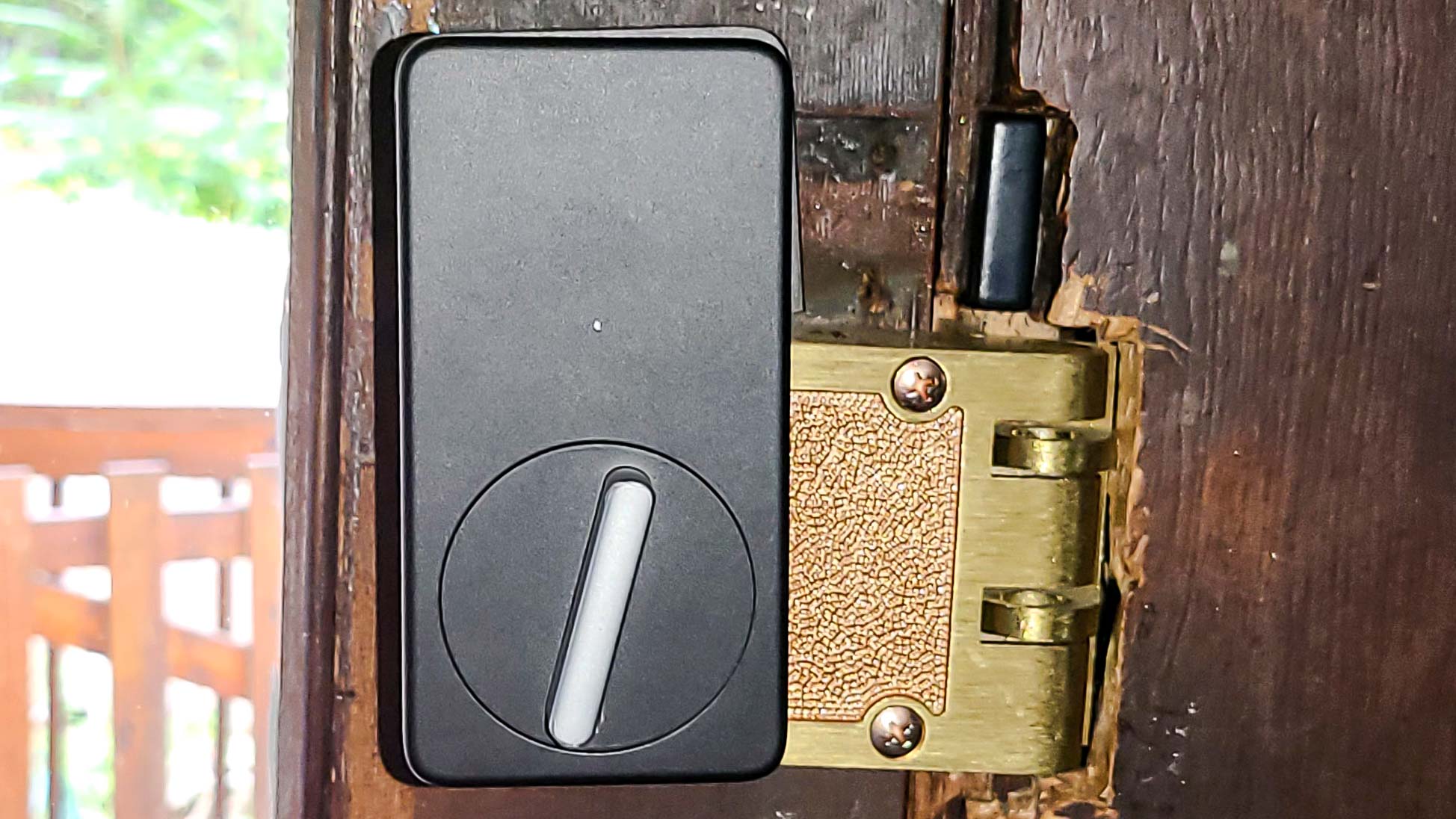
The lock is powered by two CR-123A lithium batteries, which are a bit more expensive to replace than the more common AAA ones: two new CR-123A batteries will cost you about $6. You might need a pile of these in the end: The lock, the keypad and the other Switchbot accessories that work with their system all use these batteries. The company says that the batteries should last up to six months if you use the lock 10 times each day.
Switchbot Lock Smart Lock review: Installation
The installation process for the Switchbot Lock is a bit more complicated than most, because you don’t remove the existing lock. Instead, the Switchbot device fits over the top of the lock, turning the thumb turn with a motor and adapter.
First, you have to figure out if the Switchbot lock will work with your lock: Switchbot has a guide to what types of locks will (and what won’t) work. I tested it with a jimmy-proof style lock on my back door that has so far defied smartification.
Next, you have to choose the thumb turn adapter that fits your lock. Three are supplied with the Smartbot lock that should work with various shapes and sizes of lock: medium, large and extra large. I used the extra large adapter to fit over the big thumb turn of my lock.
After that, you attach the adapter to the lock and put it over the lock to confirm that it will fit, and to pick which way around it will go. The device can be installed horizontally or vertically: an unusual and useful feature for oddly-shaped doors.
Once you know how the smart lock will fit, you adjust the height of the base adapter, the part that attaches the Switchbot lock to the door. This is rather fiddly, involving removing four screws, moving the adapter to the right height and then replacing the screws to secure the bracket. The height depends on the thickness of the lock. If you are using this with a standard deadbolt that has a thumb turn nearly flush with the door, you might not need to adjust it at all, but the chunky jimmy-proof lock that I tested it on required the adapter to be almost fully extended to fit over the lock. That meant that the entire mechanism, including the manual thumb turn, stuck four inches out from the door.
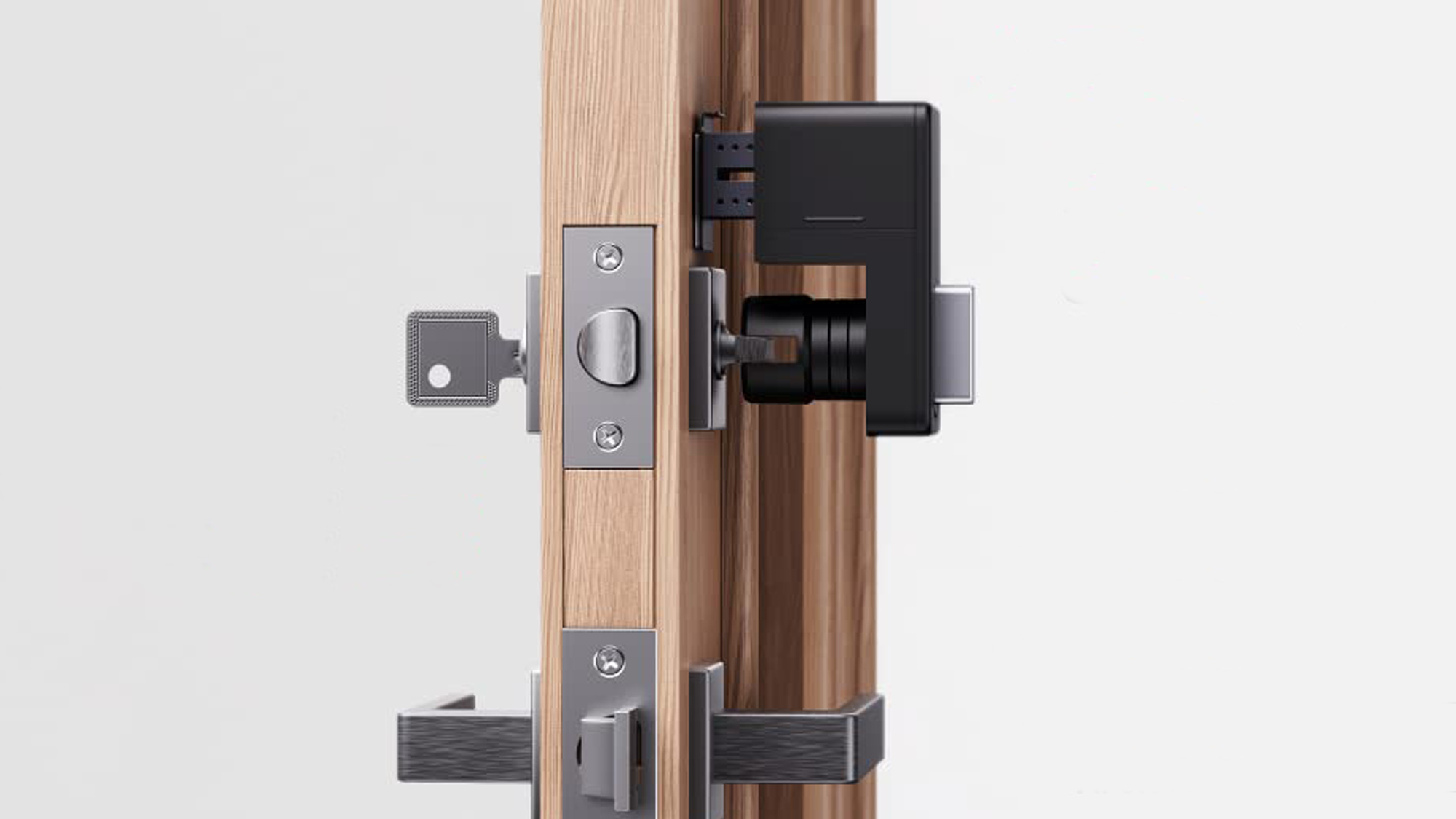
A small Phillips head screwdriver is included, but a solution that did not involve removing and replacing tiny screws would have been preferable. Even one that involved just loosening the screws rather than removing them completely would have been easier than holding the lock in place and trying to replace four very small screws.
Next, you use the sticky panel on the back of the bracket that holds the lock in place to attach the lock to the door. Switchbot recommends that you press this tape down for sixty seconds and leave it for 24 hours before you use it, as the glue needs time to set. Again, this is rather fiddly: the panel sticks to the door as soon as you touch it, so you need to be sure to attach it carefully.
A spare sticky panel is included, and you might need it, as it’s a one-shot deal: when I put the lock in place then realized it was slightly in the wrong spot, the sticky panel tore the varnish off my door and would not stick again, so I had to scrape it off and use the spare. I suspect that this sticky panel will likely completely remove the varnish on the door when I remove it again. That’s not a problem for me (it’s an old door that I will be replacing soon), but your landlord might not be as understanding.
Finally, you attach the magnet sensor to the door frame, which lets the lock know that the door is closed. Once that is done, the Switchbot lock can lock or unlock the door by using the motor to turn the latch, or you can use the manual thumb turn on the back of the Switchbot to work the lock manually.
Now you power the lock on by removing the tab from the battery compartment and install the app, which is available for iOS and Android and Apple Watch. Once you have installed the app and set up a free Switchbot account, you can add the lock and train it to work with your lock. This is a fairly simple process: you add the lock as a new device, then train it how to open the lock by using the manual thumb turn a couple of times. The device watches how far you turn it, then tries it itself. Unusually, this will also work with older locks that might require several twists of the thumb turn to lock or unlock.
Switchbot Lock Smart Lock review: In use
The main way to control the Switchbot is through the app, which allows you to open or lock the door with a touch. It also allows you to combine this with other Switchbot smart home devices, creating scenes that open the lock, turn on the lights with a smart plug and close the curtains with a powered curtain rail. Switchbot even offers a device with the redundant name of the Switchbot Bot, which can turn on a physical light switch for you. The Switchbot Lock also supports multiple locks: if you have more than one lock on a door you can install two of the Switchbot Locks and coordinate them in the app to unlock both locks at once.
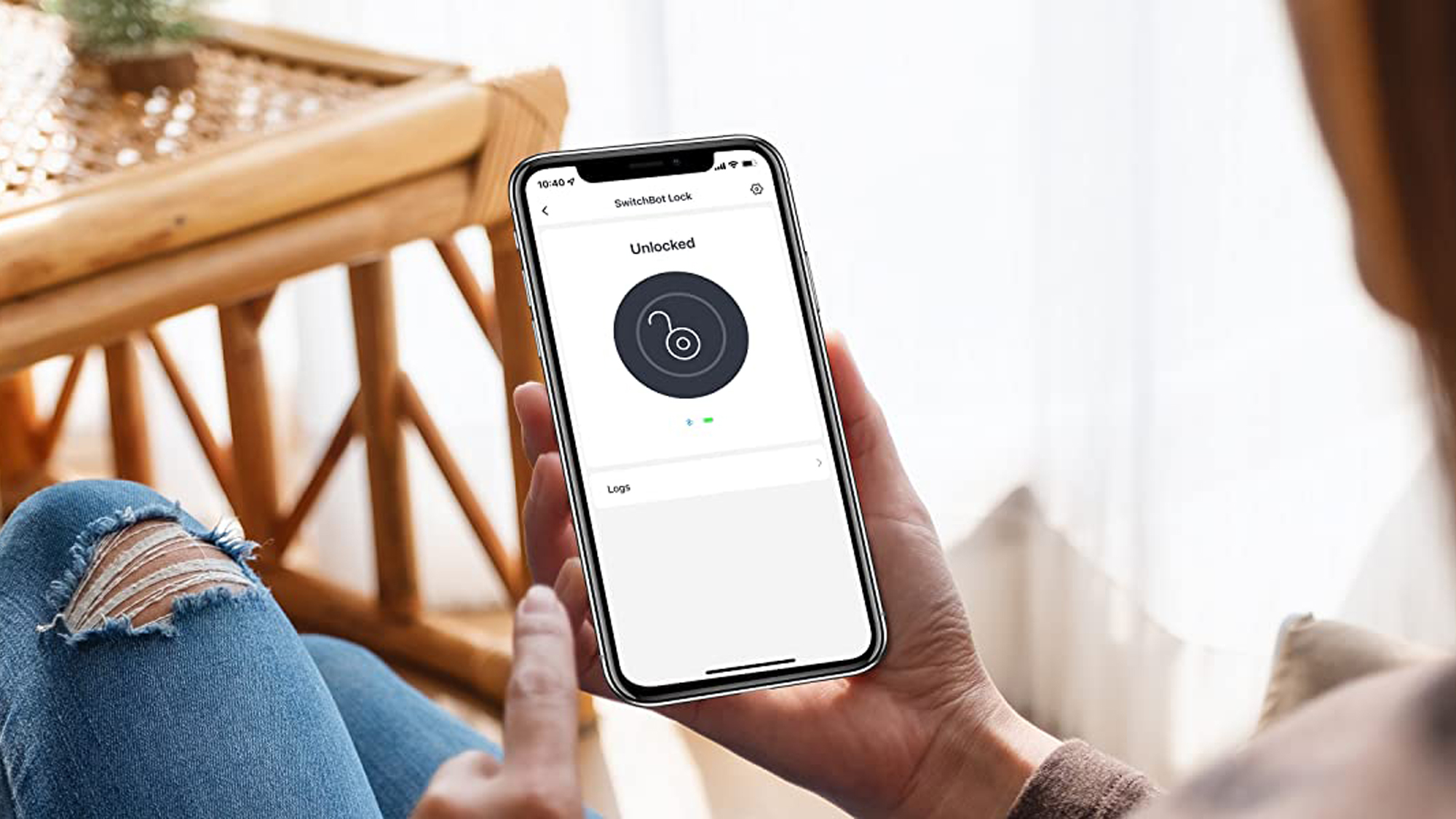
The app also integrates with Amazon Alexa, Google Home and Apple HomeKit. That is unusual: only a handful of smart locks support HomeKit. The Apple Watch app is pretty simple, but effective: once it is set up, you can lock or unlock the door with a tap, or check the status of the lock with Siri.
Another way to control the lock is the optional wireless keypad, which can be set to open the lock with a key code or with a fingerprint with the more expensive touch keypad. I tested this with the lock, and I found that it was easy to set up and use, and the fingerprint reader worked reliably. It is also powered by two CR123A batteries and stores fingerprints on the device itself, so it should still work during an Internet or power outage. The keypad also comes with an NFC card that can be used to open the door, a useful trick for kids who don’t have their own phone yet, or for those who often forget their keys: stick the card in a school bag and even the forgetful kids can get back in on their own.
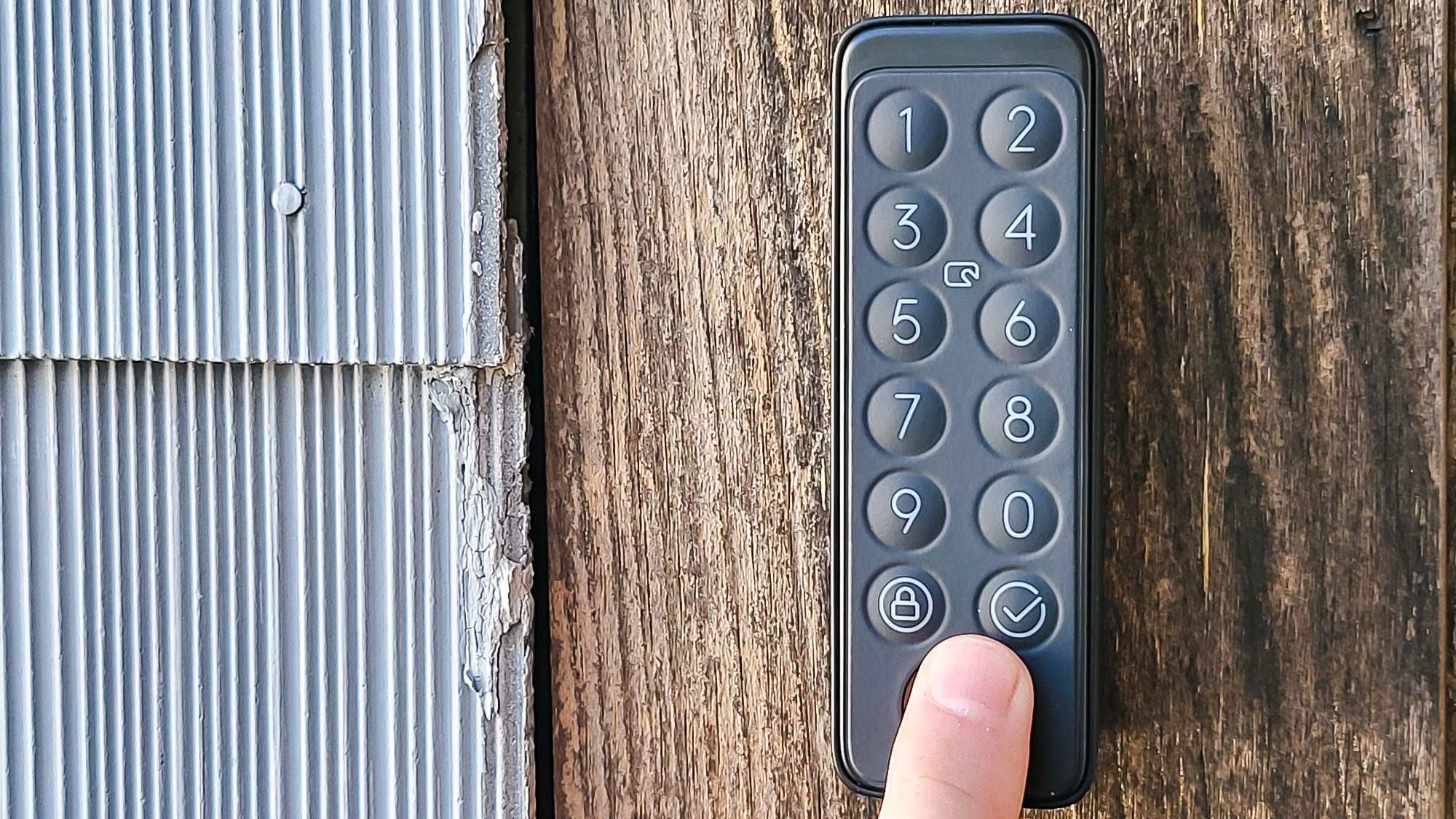
I did find that the Switchbot Lock jammed occasionally when trying to lock. That’s partly down to the type of lock and door I was using: if you don’t pull the door closed completely, the bolt of the lock doesn’t always fit into the strike on the doorframe, and when that happens the Switchbot becomes jammed and beeps helplessly. The app also beeps to notify you of a problem. That is less likely to happen with a newer deadbolt, but you do have to remember to check the lock when you leave the house to make sure it is properly closed and locked.
Switchbot Lock Smart Lock review: Bottom line
Honestly, I was kind of skeptical of the Switchbot lock when I started this review. It seems like a hack: using a motor to turn the thumb twist? Sounds like a gimmick. But I must admit I was wrong: it is quite effective, works with different types of locks and won’t upset your landlord — well, as long as the sticky panel doesn’t tear the paint off the door when you remove it, at least.
The Switchbot app is easy to use, and integrates with a large range of other devices, both from Switchbot themselves and from others. It is also one of the few locks we have seen that works with Amazon Alexa, Google Home and Amazon HomeKit. So, as long as you don’t mind the bulky design on the back of your door, it is an effective way to bring some smarts to an older lock that you can’t replace.
Richard Baguley has been working as a technology writer and journalist since 1993. As well as contributing to Tom's Guide, he writes for Cnet, T3, Wired and many other publications.
